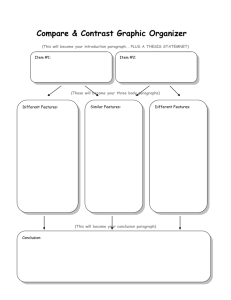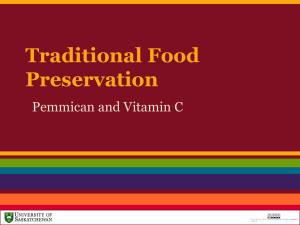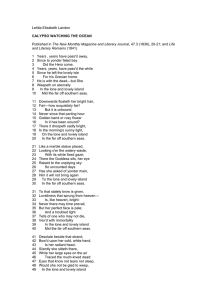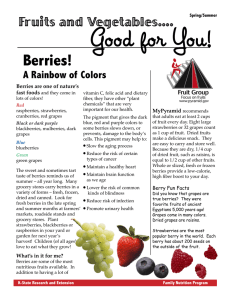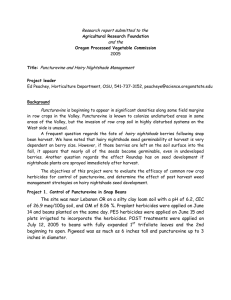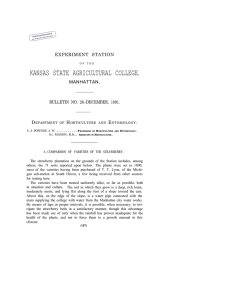LESSON PLAN TEMPLATE
advertisement
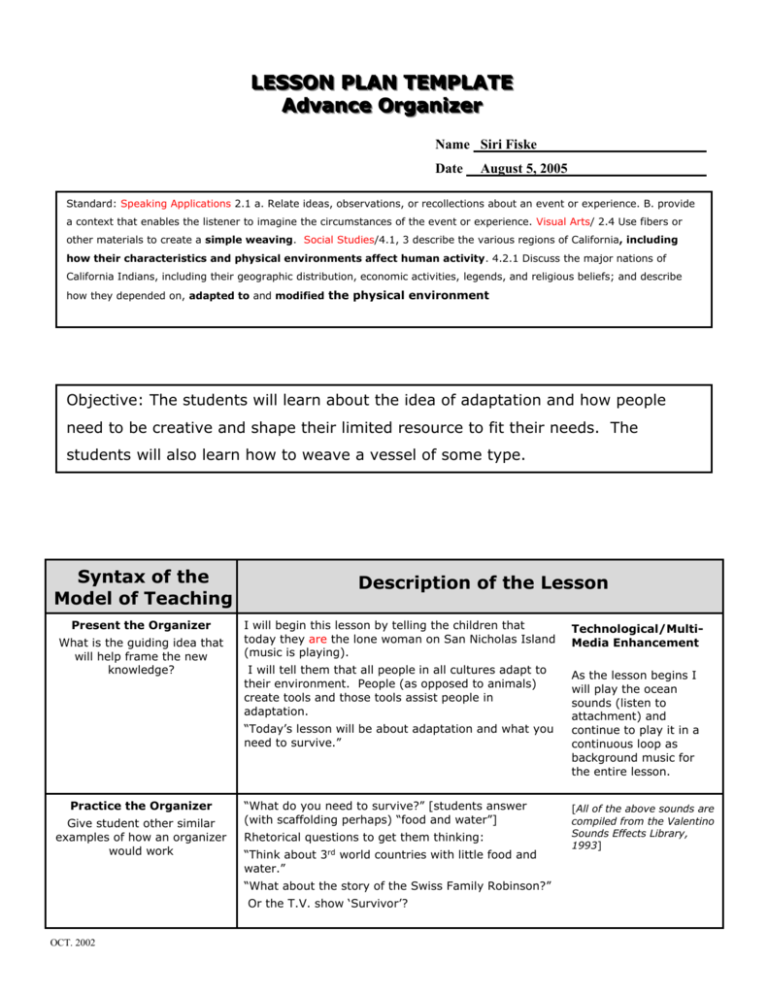
L LE ES SS SO ON NP PL LA AN NT TE EM MP PL LA AT TE E A Ad dv va an ncce eO Orrg ga an niizze err Name Siri Fiske Date August 5, 2005 Standard: Speaking Applications 2.1 a. Relate ideas, observations, or recollections about an event or experience. B. provide a context that enables the listener to imagine the circumstances of the event or experience. Visual Arts/ 2.4 Use fibers or other materials to create a simple weaving. Social Studies/4.1, 3 describe the various regions of California, including how their characteristics and physical environments affect human activity. 4.2.1 Discuss the major nations of California Indians, including their geographic distribution, economic activities, legends, and religious beliefs; and describe how they depended on, adapted to and modified the physical environment Objective: The students will learn about the idea of adaptation and how people need to be creative and shape their limited resource to fit their needs. The students will also learn how to weave a vessel of some type. Syntax of the Model of Teaching Present the Organizer What is the guiding idea that will help frame the new knowledge? Description of the Lesson I will begin this lesson by telling the children that today they are the lone woman on San Nicholas Island (music is playing). Technological/MultiMedia Enhancement I will tell them that all people in all cultures adapt to their environment. People (as opposed to animals) create tools and those tools assist people in adaptation. As the lesson begins I will play the ocean sounds (listen to attachment) and continue to play it in a continuous loop as background music for the entire lesson. “Today’s lesson will be about adaptation and what you need to survive.” Practice the Organizer Give student other similar examples of how an organizer would work “What do you need to survive?” [students answer (with scaffolding perhaps) “food and water”] Rhetorical questions to get them thinking: “Think about 3rd world countries with little food and water.” “What about the story of the Swiss Family Robinson?” Or the T.V. show ‘Survivor’? OCT. 2002 [All of the above sounds are compiled from the Valentino Sounds Effects Library, 1993] Apply the Organizer ( Learning Activity) Begin the learning experience in the context of the guiding organizer Divide into small groups by tables (5 students with ELL equally distributed) I will tell them they need to go to their –imagined - whale bone structure (on one side of the room). Near their structure we will talk about resources of San Nicholas Island – as the students name them I will make appear (from a box) the materials (rocks, shells, feathers, lots of wide dry grass). “Today”, I will tell them, “you are (in your small groups) the lone woman and you need a varied diet (remember her diet?) So you need to gather berries and shellfish from the other side of the island (classroom). It is far so you need to collect enough for 2 days. You need to gather at least 3 pounds of food (as a group together) and bring it back to your shelter”. On the other side of the room there will be a pile of shells and I will show them that legos, or other manipulatives in the class room will be our “berries”. I will tell them if they want to use the scale to weigh the 3 pounds they may. Before sending them off I will remind them that they can only use the resources on the island in this activity. The children will go gather items and weigh them and start to bring them back. I will guide (scaffold) the activity for them and tell them: - That the lone woman was one person so they need to let just one person carry it (impossible). -they can’t carry the “berries” in their shirt because the lone woman didn’t have cloth -(if needed)I will ask them to remember what items the lone woman had? What did she bring back with her? – For further scaffolding, “How did George Nidever know she was there?” BASKETS!!! -(if needed) I will ask them how do they make baskets – they will connect it with the huge pile of wide grass leaves then each group will need to weave a basket to bring the berries back. -hopefully at least one group will weave a complete basket to carry the “berries” before the class is over, if not they can finish weaving another time. Integration and Reconciliation How did we make the connections between the guiding idea and the new materials? Summarize what that learning was. OCT. 2002 The students connected the simple ability to transport food with the idea of using and manipulating the local resources. This will fit into the larger yearlong framework of people needing to live off and manipulate their physical environment (Spaniards, Mission Fathers, 49ers, Native Americans). Although this lesson was just one task it was hopefully memorable and engaged the kinesthetic learners and the ELL (in that it didn’t require an excessive amount of linguistic sophistication). OCT. 2002
